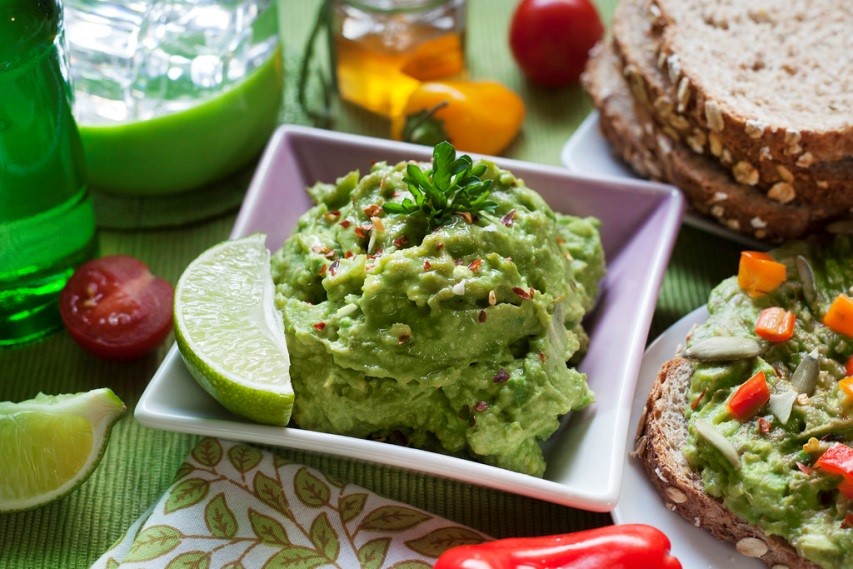Guacamole is a Mexican sauce whose main ingredient is avocado. This is the well-known fruit of the American Persea, a fruit tree belonging to the Lauraceae family, like two other famous aromatic plants: laurel and cinnamon.
The preparation of guacamole has ancient origins and, according to historical research, dates back to the times of the Aztecs: it is one of the largest and most famous pre-Columbian civilizations, which has populated Mexico from the 14th to the 16th century.
To make guacamole, in addition to the avocado, lime, salt and, in the modern version, also black pepper are used. The latter ingredient was certainly not used in the original Aztec version since it is a spice native to India.
The lime, Citrus aurantiifolia, is a citrus also known as lime, which is not grown in Europe: the areas most used for this crop are found in Florida and Mexico.
The traditional recipe includes the use of the molcajete, a mortar consisting of a single piece of basalt: the upper part, the cup, is supported by three feet. Even the pestle is made of the same material. The cup, often decorated, is the container where the avocado is ground and crushed with the other ingredients. Today the guacamole is prepared with a common mortar or crushing the pulp of the fruit with the prongs of a fork.
Ingredients for 200 g of guacamole sauce:
200 g of avocado pulp
1 lemon, or lime, juice, and rind
a pinch of salt
a pinch of black pepper
Cut the avocado pulp into pieces then put it together in a bowl. Crush the pulp with a fork. Add salt, pepper, juice and grated zest of lime. Mix all the ingredients well. Keep in the fridge until ready to serve.
The guacamole sauce is a fairly caloric food: a 100g serving provides about 170 kcal. Most of these are made from fats, about 15% by weight. Proteins and carbohydrates are present in rather limited quantities, about 4% and 5%, respectively. Good, however, in fiber content: about 5% of weight.
The concentration of some micronutrients is interesting: avocado is a good source of potassium, phosphorus, magnesium, and calcium, as well as some vitamins, such as folic acid and vitamin E. Thanks to the lime, the guacamole sauce also contains a good amount of vitamin C.
Beyond Guacamole… Avocado is a fruit, but in reality, it is almost never consumed at the end of a meal, while it is the protagonist of various recipes. In addition to the guacamole sauce, you can eat the avocado at breakfast: “Cut it into slices and taste it on the wholemeal bread with oil and salt or blend it and spread it on the bread. Same solution for a snack and it’s tasty even if you add it in small cubes in salads. The avocado is useful for vegans and vegetarians as it can replace the butter in the preparation of desserts. The doses are the same: 100 g of butter is equivalent to 100 grams of avocado, which should be used in deserts’ dough. This fruit is multitasking and is the subject of various experiments in the kitchen. Find the avocado ice cream or the liqueur made from the pulp. And nothing is thrown away: even the core, rich in vitamin, can be used: Just remove the thin brown skin that covers it (it is bitter), crush it, blend half of it in the mixer with a banana, a handful of spinach, a natural yogurt and a little mint and the drink is ready.
